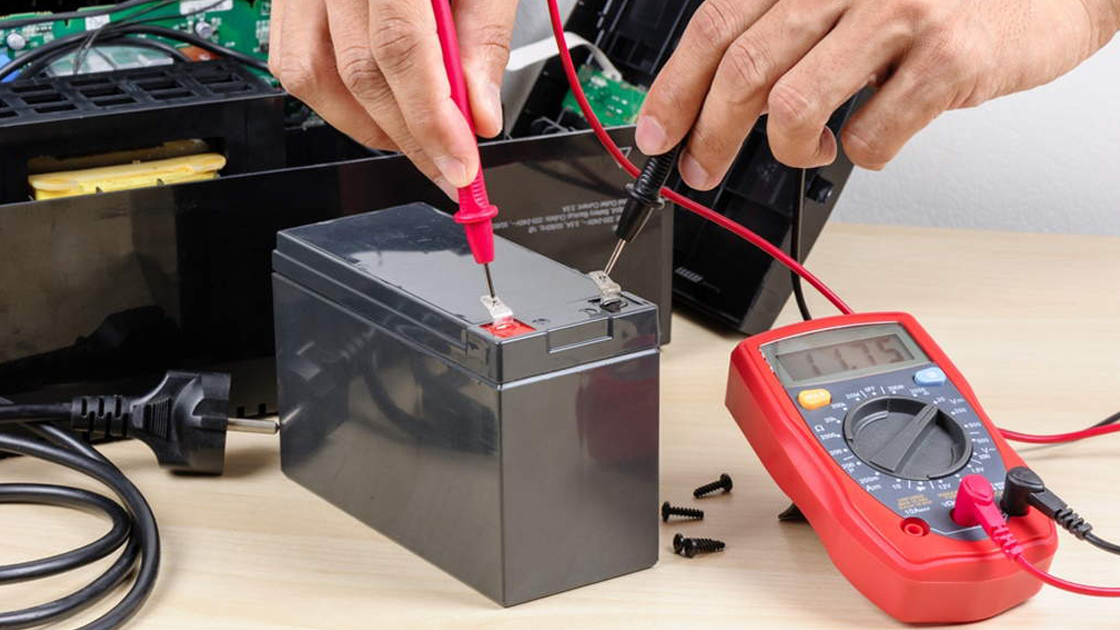As a car driver, you might have heard about the voltage of the vehicle battery. But what is car battery voltage, exactly?
Looking for no more – the answer is already in our article. Without wasting more of your time, let’s begin.
Definition
First of all, you need to know what the voltage of a car battery is. Understanding this concept can help you a lot in many cases and prevent battery failure and any other risks in the future.
A vehicle battery voltage indicates its potential stored energy. It is the result of the measurement of the potential of the positive battery terminals and the negative counterparts.
In case you might be asking yourself, the process is quite simple. Batteries pass a charge from one terminal to the other, resulting in electricity. The negative battery terminal has electrons to spare, thus earning the name “negatively-charged particles.” Since the positive terminals are lacking in electrons, those particles inevitably travel to such terminals.
Yet, if your battery is off, it will impede the above process. But when the battery is powered, there will be a circuit between the terminals. It is the flow of electrons that produces electrical energy, allowing your vehicle to run smoothly.
Influential Factors On Car Battery Voltage
Aside from the state of the charge itself, keep in mind that some factors can affect the voltage of your car battery. They are an indicator of your battery health:
Temperatures
If the weather where you live is harshly cold, you will expect a reduced performance in your car. More specifically, productivity will decline by roughly 40 percent at the freezing point. Even if the battery is full and the car is well-maintained, it can hardly retain the same performance.
Hence, this explains why many people tend to find weak batteries in the winter.
Age
Batteries get less productive over time as they are constantly in operation. Since an old, dead car battery can no longer hold the charge, you will get a low voltage.
State Of Charge
By now, you should get a grasp of the concept of car battery voltage. But let us tell you something: the voltage doesn’t stay constant all the time; it varies according to their states. Here is the battery voltage range:
Fully Charged Voltage
When vehicle engines are not in operation, the voltage of a fully charged battery can reach 12.6 volts and above. If the voltage goes below 12.6 volts, this sign should not be ignored. In detail, this may be signs of a fault occurring or the battery isn’t fully charged.
Even a slight difference from the figure of 12.6 volts does matter. For example, 12.2 volts indicates that the battery is 50 percent discharged.
When The Car Is Starting
When the engine is starting, it utilizes the power from the battery. During this process, the battery voltage will reach the running point after temporarily decreasing.
For a good maintenance car, the voltage is usually 10 volts or higher. The voltage might be affected if you start your car in cold weather; it will consume more energy to start as the voltage is decreased by the cold engine.
When The Car Is Running
When the engine is getting started, the volt range is much lower, somewhere between 13.5 to 14.7 volts. However, the voltage will get higher when the car is in operation. This is because when the vehicle is running, the car alternator charges the battery.
If your car battery voltage differs a lot from these figures, a fault may have occurred.

Test car battery voltage with a multimeter
Why Car Battery Voltage Is Important
You can understand battery conditions depend on their voltage, thus fixing them when necessary. Otherwise, you should expect an unsmooth ride with the car stalling repeatedly.
Besides, the battery means more to your car than you can imagine. It provides battery power to run the electrical systems and keep them working well, such as lights, automatic windows, and other components.
When the engine is not in operation, the battery satisfies the electrical needs of your car. More importantly, it produces the necessary “spark” to get the engine started. The starter motor relies on the battery’s current, and the alternator powers the electrical system.
Also, a healthy car battery provides stability to the circuit voltage when the engine is running. Therefore, the systems won’t be affected by voltage spikes.
For optimal performance, you must check the car battery regularly, preferably before winter. And remember to keep track of the voltage readings to see if there is any sudden change.
Related:
- A Detailed Guide On How To Test Batteries With A Multimeter
- How To Read Car Battery Date Codes? A Simple And Detail Instruction
- How To Read Battery Charger Amp Meter? A Simple And Easy Guide
- How Long Do Car Batteries Last? When Should You Replace Them?
How To Measure Car Battery Voltage
You can check the voltage of your car battery with tremendous ease using a multimeter. Here are the methods that you should follow closely for battery tests.
If your car has been running for a while, let it sit with the engine off for a certain time (At least an hour or overnight). As an explanation, it takes time for energy to be refilled in your battery by the charging system. Which is called the “car battery open-circuit voltage,” also known as the “resting voltage.” Otherwise, there won’t be an accurate reading of the voltage.
Now, take your multimeter out and start measuring:
- Always remember to adjust the multimeter to DC voltage, and set the dial at 20.
- Next, touch the multimeter’s positive probe to the positive terminal. It is easy for you to recognize with the color red and a plus (+) sign.
- Then, proceed to touch the negative probe to the negative terminal. Unlike the positive one, this is often in black with a minus (-) sign.
- Read the voltage. This number is often shown on the multimeter’s window.
You need to be extra careful when touching the probes on the terminals. Otherwise, the result will be a negative reading.
You should be aware of the display reads something lower than 12.6 volts. In this situation, break the connection of the battery from your vehicle and use a battery charger to charge it.
Modern car batteries are often associated with something termed “parasitic loss”, affecting your measurements.
Moreover, testing a fully charged battery can tell whether there is a problem with the battery itself or the vehicle’s system.
If the voltmeter readings are slightly below 11.9 volts, don’t panic. There is no need for a battery replacement, as sulfated batteries can still work well. However, you should replace the existing battery with a whole new one if it reads below 10 volts.
Final Thoughts
You have gone through our detailed analysis of car battery voltage and its related issue. By understanding those concepts, you can easily identify the technical problems with your vehicle battery health.
Thank you for taking the time to read this article; we hope our article has been of great help!
WHAT'S NEW
The best AGM battery chargers will be the ideal option to revive your flat battery without relying on professional help. These handy high-tech chargers are extremely beneficial because they offer...
The Genius Boost GB40 is popular because of its ability to help boost your vehicle when it has battery issues. Many of our customers wonder why the Noco GB40 can work greatly like so. So, we have...

